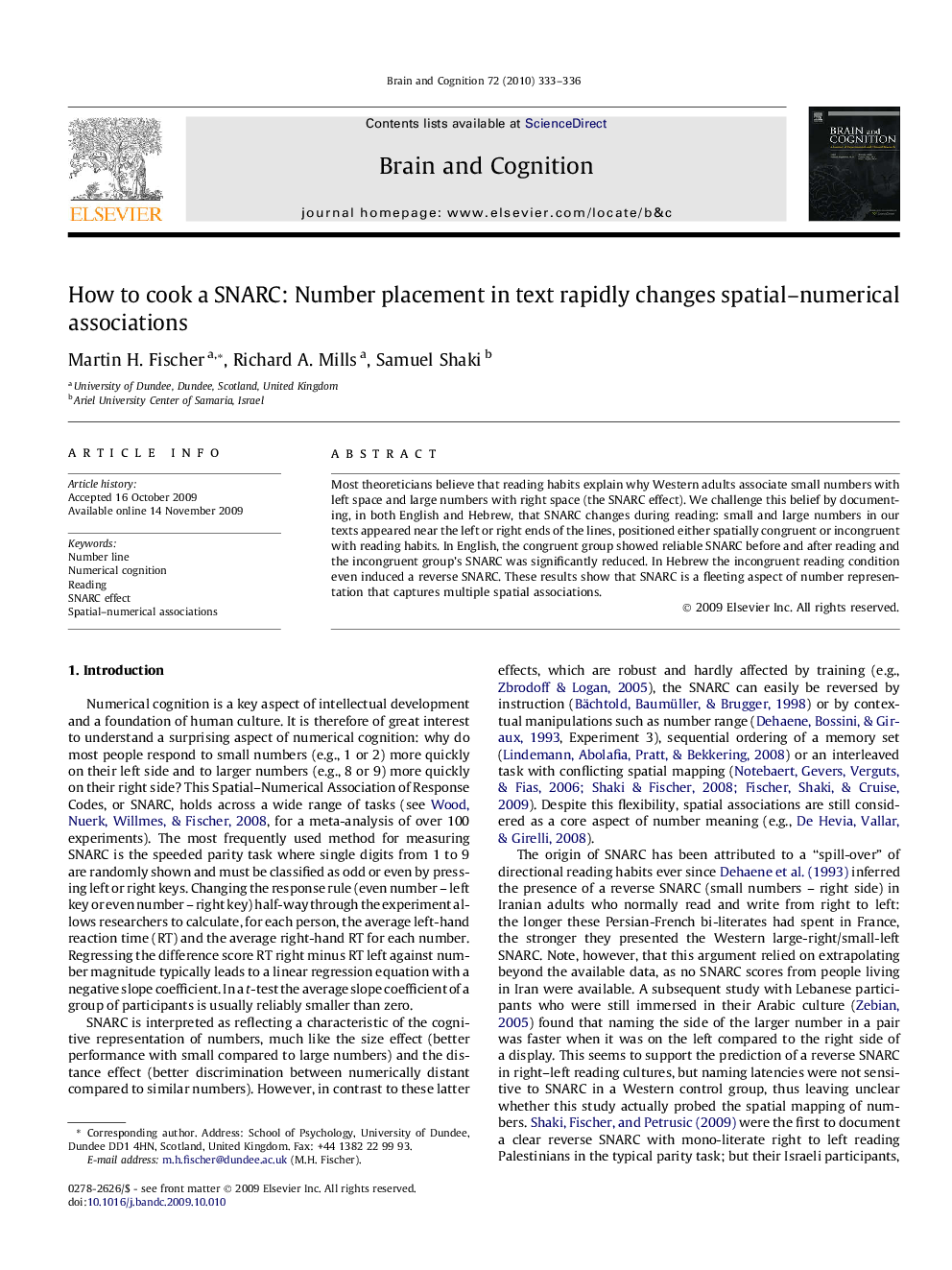| Article ID | Journal | Published Year | Pages | File Type |
|---|---|---|---|---|
| 924618 | Brain and Cognition | 2010 | 4 Pages |
Most theoreticians believe that reading habits explain why Western adults associate small numbers with left space and large numbers with right space (the SNARC effect). We challenge this belief by documenting, in both English and Hebrew, that SNARC changes during reading: small and large numbers in our texts appeared near the left or right ends of the lines, positioned either spatially congruent or incongruent with reading habits. In English, the congruent group showed reliable SNARC before and after reading and the incongruent group’s SNARC was significantly reduced. In Hebrew the incongruent reading condition even induced a reverse SNARC. These results show that SNARC is a fleeting aspect of number representation that captures multiple spatial associations.
